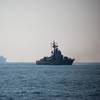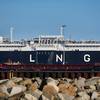A tale of survival could best describe John S. Burnett's experience onboard his sloop Unicorn in January 1992. Sailing solo across the South China Sea to Singapore - one of the busiest shipping lanes in the world - Burnett was attacked by pirates. However, with luck on his side, Burnett, who is a journalist and professional seaman, survived. Following this harrowing experience, Burnett was prompted to investigate further the world of modern-day piracy - world that is as shocking as it is terrifying.
Dangerous Waters: Modern Piracy and Terror on the High Seas (Dutton, $24.95), provides an investigative look into maritime terrorism on the world's oceans. Burnett holds readers with his exploration of resurgence of piracy and also explains why this subject is increasing at such a rapid rate. It is a little-known fact, which Burnett reveals, that off the coasts of nearly all continents, pirate attacks worldwide amount to several thousand each year. Since approximately 95 percent of the world's commerce is transported via ship, including 60 percent of the world's crude oil, it is therefore easy to suspect the potential for an economic and environmental disaster is rather high.
Often depicted as high-class rumrunners by the movie industry, pirates are anything but. They can range anywhere from local seaman looking for a quick and easy fix, to highly-experienced guerillas, rogue military units or former seafarers recruited by high-level crime organizations. Often armed with sophisticated weaponry such as machetes, assault rifles and grenade launchers, pirates move about the high seas via speedboats and fishing boats in search of the world's largest, lucrative vessels, mainly supertankers, cargo ships and cruise ships - along coasts or international waters. Once the pirates move in on their subject, they hop aboard, eventually overtaking the vessel and its crew, both of which are sometimes never to be found again. Many times these vessels, dubbed by Burnett as "modern day ghost ships," resurface as transport ships for illegal immigrants to the U.S. or drug cartels. According to Burnett, this is a problem that exists worldwide. "There is not a shipping lane, a navigable strait, and important canal that is safe from those determined to take over a ship," says Burnett. "Pirates have attacked vessels on these waterways - not something that is well know to outside the maritime community."
Highlighted in this true account is the author's journey aboard a Very Large Crude Carrier (VLCC) as it transits the most pirated waters in the world en route to a refinery in Singapore from the oil fields of the Persian Gulf. VLCC's, which weigh in excess of 300,000 tons, are able to carry approximately two million barrels of crude. Yet, despite their mammoth size, are exceptionally vulnerable to, and have been, frequent targets of pirates.
Burnett also offers an in-depth explanation of a pirate attack onboard oil tanker Valiant Carrier in 1992 - a time when piracy had not reared its head as a high concern. Burnett outlines the assault on the ship's master and his family and how it fueled the creation of the Piracy Reporting Center - which transmits daily alerts to ships worldwide.
Featured videos

Unlock Onboard Data Efficiencies

Inmarsat Enhances Service to Drive Digitalization

Tracking Foreign Vessels Working in the U.S. Jones Act Market
Subscribe for
Maritime Reporter E-News
Maritime Reporter E-News is the maritime industry's largest circulation and most authoritative ENews Service, delivered to your Email five times per week









